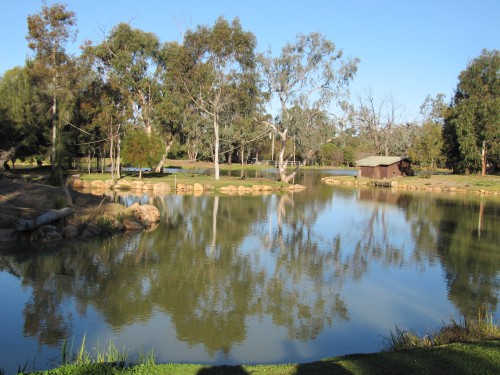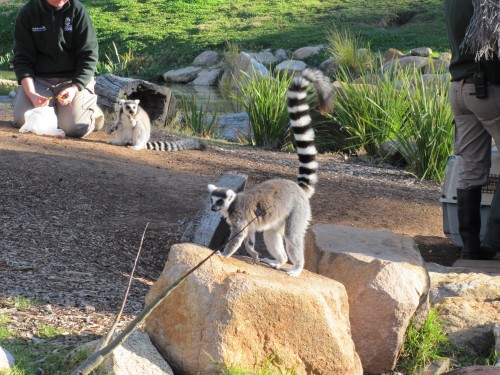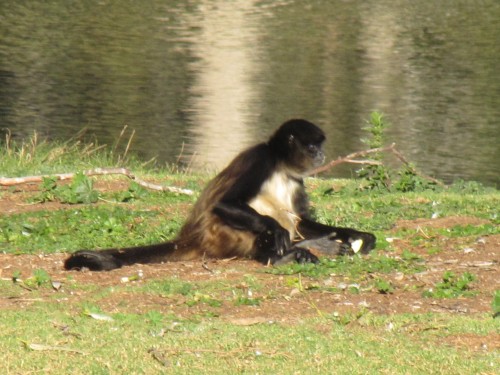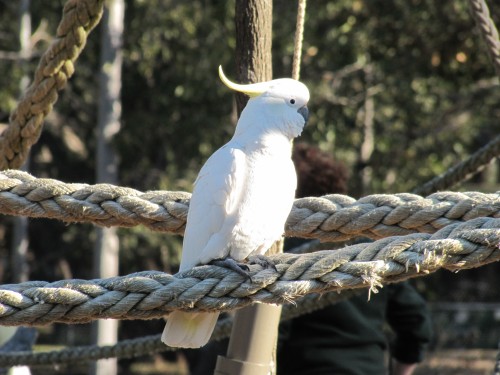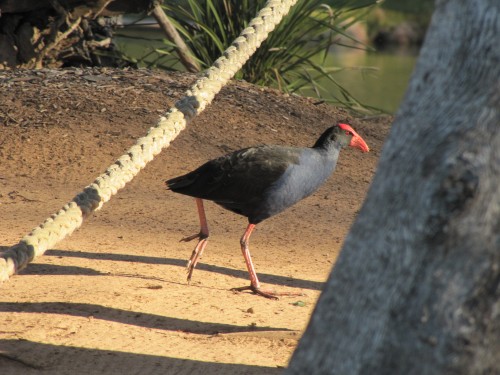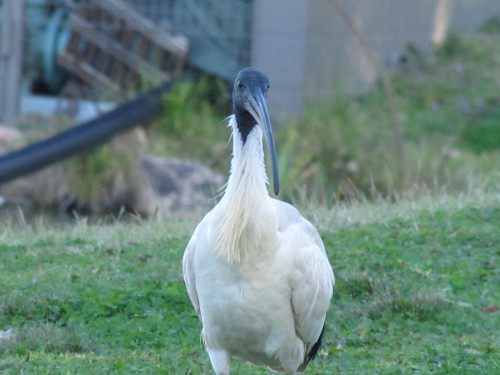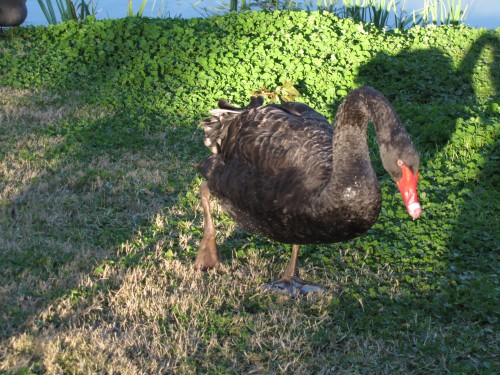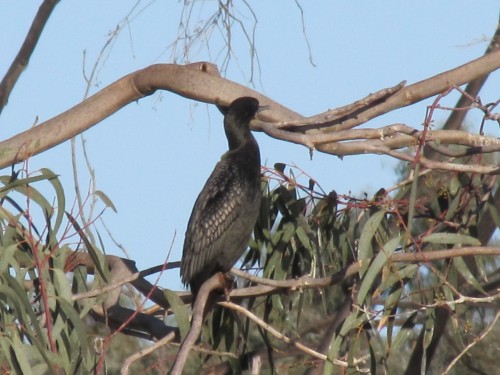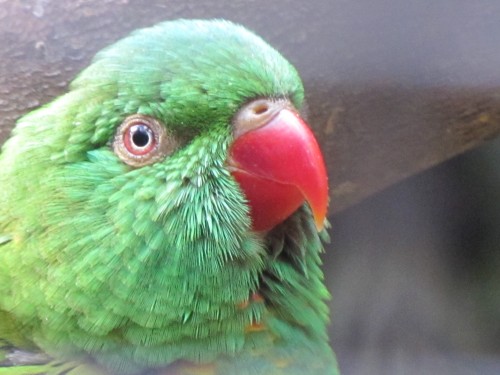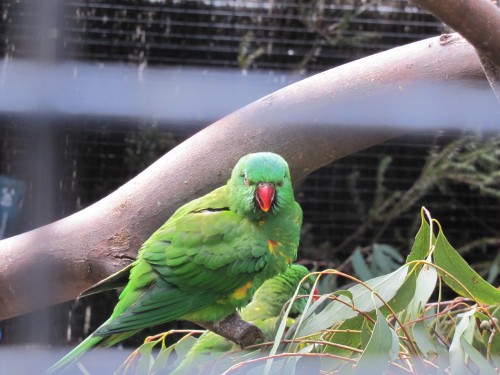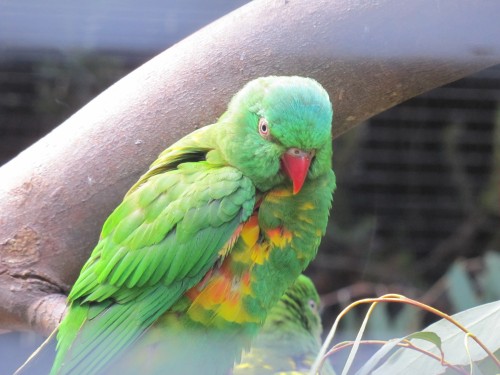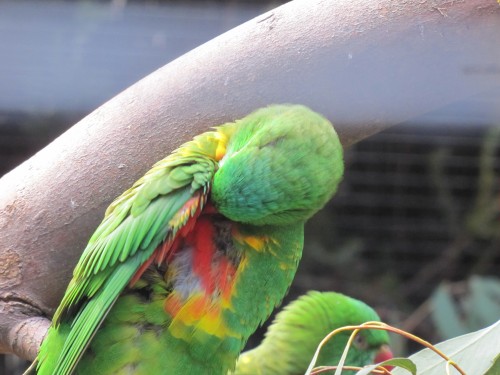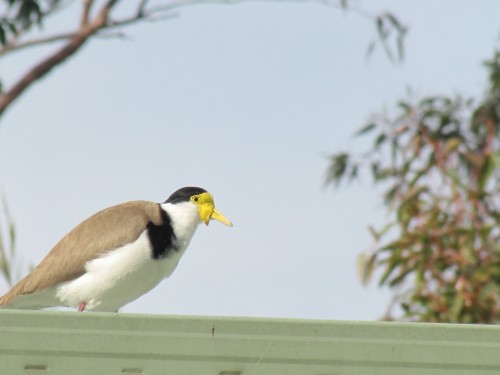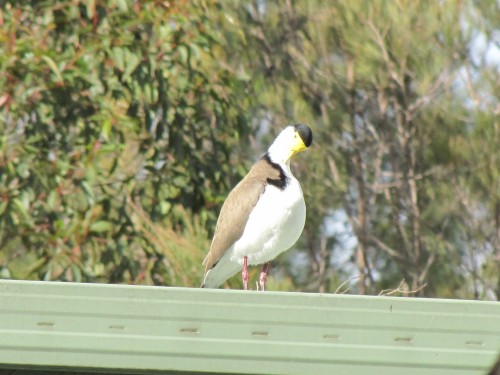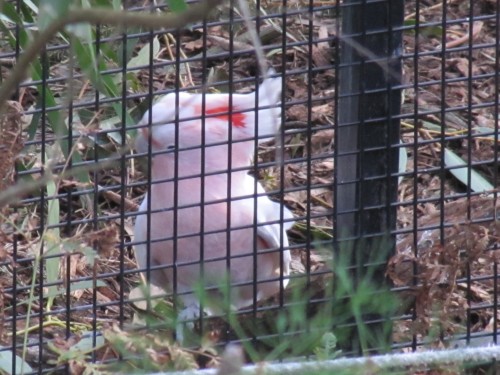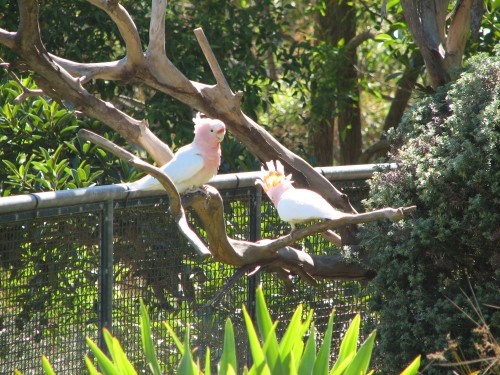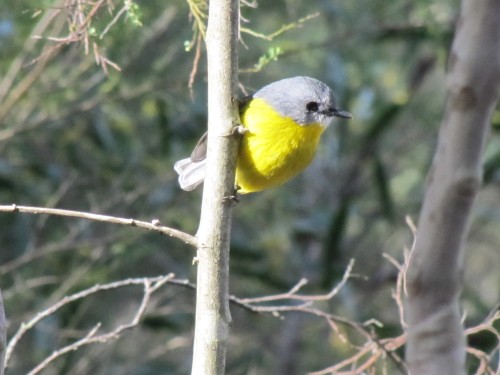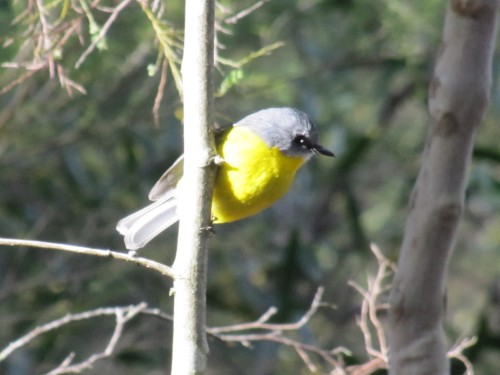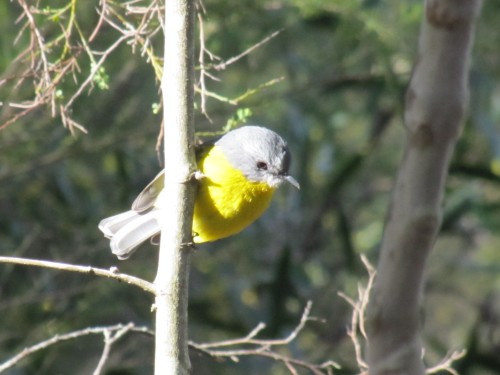Birds and animals – Western Plains Zoo
After leaving Sydney and our family with some sense of sadness – the grandchildren wanted us to stay – we travelled to Dubbo. As we entered the rural city we unfortunately had a little bingle in our near new car. Trying to negotiate a round-about I side-swiped another car. I must admit I was at fault; I was in the wrong lane. Happily no-one was hurt, just a little shaken, and both cars were still drivable. I exchanged details with the other driver for insurance claims and we were on our way again 20 minutes later. (Postscript: back home some weeks later the car looks like new again. Our local repairer did a great job.)
By the time we had settled into our cabin in the caravan park it was dark, so any bird watching in the area had to wait. We had a delightful dinner with cousins of my wife that evening, and next morning we gathered at the local crematorium for the funeral of a cousin. While it was a sad occasion, we were pleased to be able to catch up with so many of the family. After lunch together we had a few hours of daylight left, so we drove the short distance to the Western Plains Zoo on the southern edge of Dubbo. This zoo was set up many years ago as an adjunct of Taronga Zoo in Sydney. We had long desired to visit but this was our first opportunity.
We didn’t enter the zoo proper – just the picnic area near the entrance. There is no charge to visit this lawned area. The extensive picnic grounds look over an artificial lake (see top photo above). There are two islands in the lake, each one home to some animals. The closest caters for a family of Ring-tailed Lemurs (see photo above) while the other is home to a group of Black-handed Spider-monkeys (see photo below).
It was feeding time for the monkeys and lemurs, so we sat there in the calm, balmy evening light watching the animals on the islands. As we watched I was able to get a few photos of some of the local bird life, including the Sulphur-crested cockatoo (see photo below) who was obviously a regular visitor to the islands to benefit from any food scraps the animals might overlook. The ropes in the photo are actually there for the entertainment of the lemurs. They also make good perches for a cockatoo.
Just below the cockatoo was a Purple Swamphen, also on the lookout for a free handout. These two birds are wild birds which have come in to the zoo grounds because there is abundant food for the taking. Both probably also check out the picnic grounds for food scraps left behind by people visiting.
The Australian White Ibis (see below) is another species which takes over picnic grounds in search of an easy meal. This individual was alone at the time, but when the zoo is crowded it is probably joined by many more. On our visit the next day we saw large numbers of this species, some of them nesting in the grounds of the zoo (I will show photos of this on another post soon).
In some parks in many places in Australia, the White Ibis has become a serious pest species, harassing people having a quiet picnic by snatching food from them, even to the point of jumping on to a picnic table loaded with human food. Being 65 – 75cm (about 2 feet) in height they can be very intimidating to young children, especially if the children are walking around with food – an ice-cream for example.
Another bird which can be intimidating is the Black Swan (see photo below). This was the only individual we saw that evening, but it came towards where we were sitting in a very determined manner, then waddled up the bank and right up to about a metre from us. When we produced no food it started grazing on the abundant grass all around us. This is another species which is a pest in some parks and picnic grounds. Their beaks can give a nasty bite and their wings, if used, can give some unsuspecting person an nasty whack.
Don’t feed the birds
I’ve written on this topic many times before, but it is worth saying it again, just to educate new visitors to this site. PLEASE DO NOT FEED OUR NATIVE AUSTRALIAN BIRDS. Human food is actually dangerous and even deadly to many of our birds. Added to that risk is what is happening with birds like ducks, ibises and swans: they look to people for free handouts and very quickly become major pests.
If you want to encourage Australian native birds into your life – and into your garden – provide 3 or 4 or more bird baths for them. Plant Australian native plants so they have their natural food, places to shelter and sites for their nests. Read more about this topic here and here.
Of course there are many birds which do not bother people and just get on with their lives. One such species is the Great Cormorant shown below. It is just having a break from searching the lake for fish, frogs and tadpoles.
So this was our first taste of the zoo. We returned the next day for a whole day visit. Photos of the birds we saw – and a few animals too – in the coming days.
Stayed tuned.
It that close enough for you?
This Scaly-breasted Lorikeet in one of the aviaries at the Australian Reptile Park made certain I managed a good photo of it up close. He posed in a number of different ways, squawking loudly as if to ask how it looked.
It is getting photos like this one that I like visiting zoos, and especially zoos with aviaries. While it is great if the zoo has walk-through aviaries, I have proved that one can take reasonable shots through the wires of the cage. Sometimes you just get lucky – like on this occasion – and the bird poses really well.
Scaly-breasted Lorikeets are found along the coastal regions of eastern Queensland and in north-east New South Wales. It is a species I have yet to observe in its natural environment – another reason for getting photos in a zoo. I think I am well overdue for a trip to Queensland.
A high rise bird apartment
From time to time I see some amazing, interesting or even bizarre things where birds are concerned. At first glance, today’s photos could fall into that category. Masked Lapwings (plovers) are usually found on grassy areas – lawns, ovals and roadside verges. What is this one doing on the roof of the Australian Reptile Park (near Sydney)?
Oddly enough, this is quite common behaviour with this species. In fact, they often prefer to nest up on the roof of a house, shed, office or factory in some situations. How the little hatchlings survive the drop onto the ground amazes me; they must be quite tough little balls of fluff. Perhaps all that downy fluff helps them to bounce like a tennis ball.
When you think about it, nesting on a roof is a better survival strategy than nesting on the ground like they usually do. Not only does this help minimise the threat from cats and dogs, it generally does away with interfering people and their mowers.
In this case however, it is the one safe place to nest away from the hundreds of visitors to the park every day – that’s a lot of shoes tramping around on every available bit of grass. Eggs don’t take kindly to stomping feet.
This is not what I wanted
The Major Mitchell Cockatoo has to be one of Australia’s most beautiful birds. I also do not yet have a great photo of this species. The individual shown in today’s photo was in one of the aviaries at the Australian Reptile Park, near Sydney. Just seconds before I took this photo it had its crest up. I waited and waited, but it didn’t lift the crest again and we had to move on.
I think I will have to camp out on the farm where I grew up. That is where I last saw this species in the wild, but I was too slow with my camera before they flew off. You can see several other photos of captive birds here.
The photo below I took of two cockatoos during the Bird Show at Taronga Park Zoo some years ago. These are trained birds, not wild ones.
At last – an Eastern Yellow Robin
At last – a series of photos of the Eastern Yellow Robin. It is a relatively common bird in its range. Trouble is, I have never spent much time in its preferred range. Having to travel great distances to see some bird species can be a pain at times, but when you see that elusive bird, or get a good photo of one that has eluded your lens up until that time, it becomes a special moment.
I have seen this species in many places over the years, but so far haven’t managed a photo – even a reasonable shot. Those shown today on this post are not brilliant, but they are a start. Now the goal is to improve on these photos.
The Eastern Yellow Robin is found throughout eastern Australia, from Queensland through New South Wales and southern Victoria and into south-eastern South Australia. Its close relative, the Western Yellow Robin is found in southern Western Australia and western South Australia. It has been well over 30 years since our last trip to WA. We must rectify that soon.
Today’s photos were taken in the grounds of the Australian Reptile Park. The robin was a wild bird and not part of their aviary collection.
Further reading about robins:
